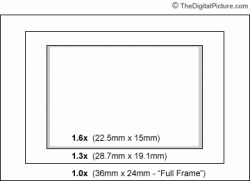uh, i think there is some misunderstandings here. A 10-22mm lens on, say, a AP-C Canon, for example, is the same Focal length as a 16-35mm on a FF. I am re-reading what you posted, and is sounds as if you are saying the crop factor is actually in the lens, no?
No, the crop factor is in the sensor. But the lens and the body are two different things and many people are very confused about this.
First of all, a lens always has its own native focal length. This optical feature does not change whether one uses full frame sensor or a crop sensor. A 200mm lens is a 200mm lens optically, whether the FIELD OF VISION was 200mm (full-framer) or 320mm (cropper).
It means that if you shoot 200mm with a cropper, it LOOKS LIKE you have similar framing than if you shot 320mm with a full-framer. FRAMING however is only what you see from the rear of your camera. It is very different than what the lens produces for the body. Shooting with 200mm optics and 320mm optics is like comparing apples to oranges as the saying goes.
Now if you shoot 200mm with a cropper and 200mm with a full-framer, then the image produced by the lens is identical for both sensors. If the image produced by the lens is identical, then, why it looks different when you've shot the pics? The cropper only records the center part of the image whilst full-framer records the whole image. That is why APS-sized sensors are called "crop" sensors, because in effect they can only record part of the image.
My point was that given exactly same optics, two bodies produce same picture qualities. You just need to compare the center part of the full-frame image to the full frame of an already cropped image. That comparison shows that identical optics produce identical pictures.
FRAMING is another story. If you compare two identical framing, you are comparing it wrong. That is because even though using 30mm lens on a crop body it LOOKS LIKE you're shooting 48mm, you're still using 30mm optics that have features of a 30mm lens. Thus, to repeat myself, crop body only changes framing and optical qualities still define how the picture is produced.
Lens rules, not the sensor.


